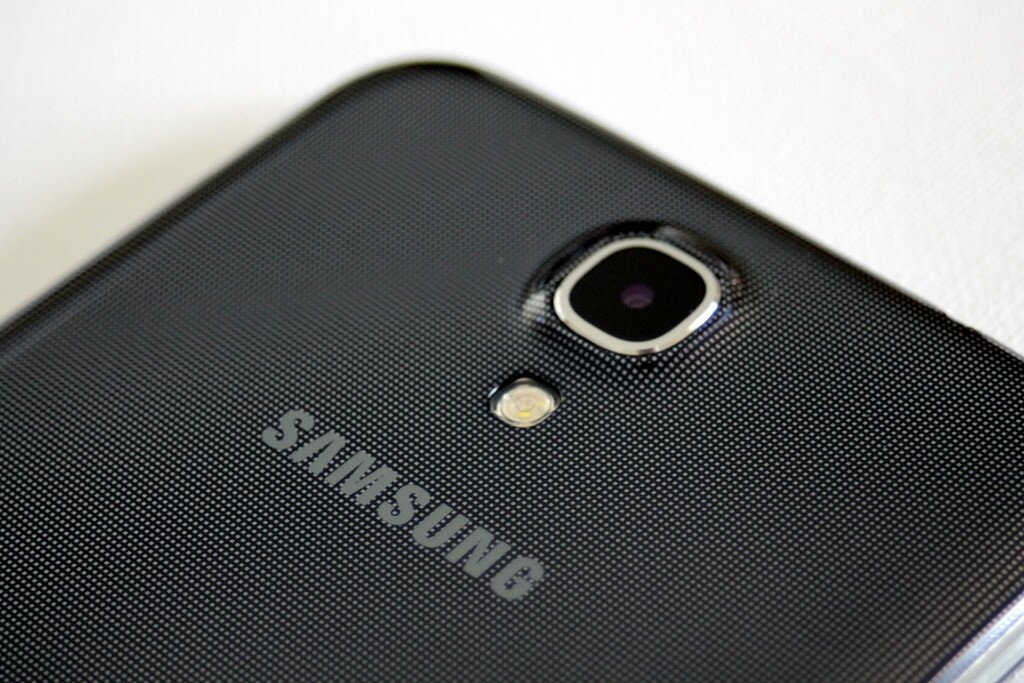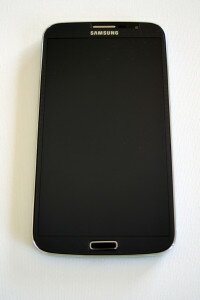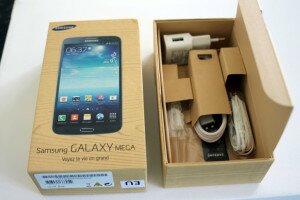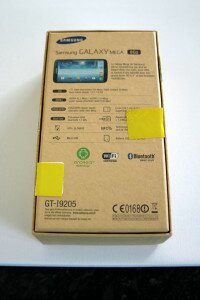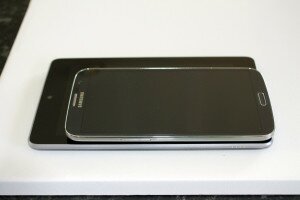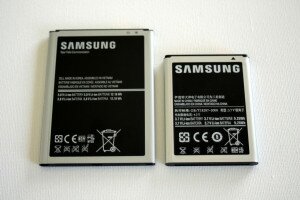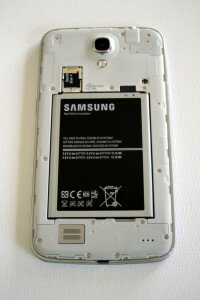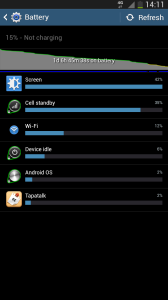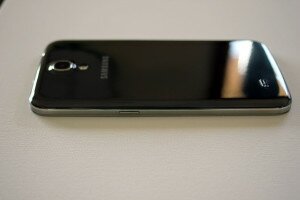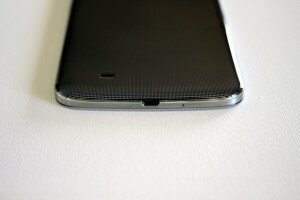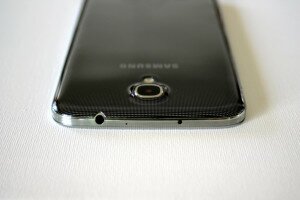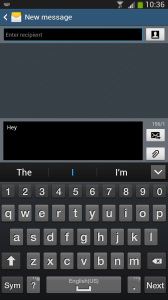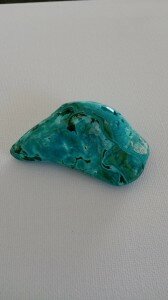Samsung’s Galaxy Mega 6.3 LTE – The Believable Behemoth
I am not, by any stretch of the imagination, a fashionable person. Having almost always worked dirty, manual jobs, my clothing takes function over form (unless circumstances necessitate otherwise or, “I’m up all night for good fun.”) As such, I have never really bought into the ‘too big for a phone’ line of thinking. Having daily-driven the Dell Streak 5, original Galaxy Tab 7 and the Galaxy Note for extended periods of time, I am more than happy to lug around as much screen and battery as manufacturers will give me. The original Galaxy Note gave these large, relatively niche devices a proper introduction to the world at large – one which has been embraced with open arms, if adoption rates of the excellent Galaxy Note II are anything to go by. And so by extension, we largely have Samsung to thank for introducing the large-screened device to the mainstream market.
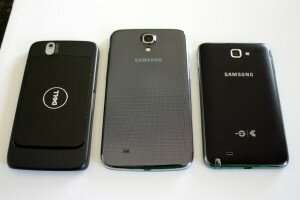
To date though, Samsung’s larger devices have been top-of-the-line, incorporating the ‘best of the best’ specifications and carrying a price tag to match. There has never been a suitably priced, mid-range phone device packing a larger screen. The original Tab 7 came close, but it was designed as a tablet first, with phone functionality. Later efforts in the family, such as an elusive model of the Tab 2 7.0 with voice support, and an even scarcer Tab 7.7, followed this trend. So what happens when Samsung flips the design language? How do you make a phone first, with enough tablet capability to step in for a 7-inch model tacked on for good measure? Well, you do this:
Good news, everyone! Behold, the Samsung Galaxy Mega 6.3. This is Samsung’s first attempt at making the ‘plus five’ club a little bit more accessible to the masses. Borrowing heavily from the Galaxy S4’s design language, the drawcard feature of this device is of course its namesake – the mammoth 6.3-inch (16cm) 1280×720 LCD display. The Mega 6.3 is available as a SIM-unlocked device only at this stage, so you are unlikely to see one unless you import. That said, a designation has been set aside for an AT&T model (i527), although no official word on this seems to exist at time of writing. There are several SKUs immediately available, with a choice between 8 or 16GB of onboard storage, black or white colour, and single (i9200, i9205 with International LTE) or dual-SIM (i9202) capabilities.
The device ships in the current generation Samsung packaging – biodegradable box printed with soy ink in a faux woodgrain pattern. Product representation on the front, notable specifications on the back. Seen a Galaxy S4 box? Yep, exactly the same – just with increased dimensions of course. This is a big boy’s phone, after all.
Opening the package, you are greeted with the device immediately, resting atop the usual included accessories (wall charger, microUSB cable, wired headset and battery) and documentation. Having already received cases and screen protectors I was not immediately surprised by the size (you probably will be, though.) Rather, I was surprised by just how much of the front the screen took up. Samsung have done an excellent job at maximizing the screen coverage ratio of the device. And this is really the defining point of the design, the flip to the tablet heritage. The majority of people will look at this device on paper, see that 6.3 and think, “That’s less than an inch off the Nexus 7; no way can I carry that thing!” This isn’t quite true. You see, that’s a panel dimension and not the device dimension. Where the Nexus 7’s bezel can be measures in centimeters (almost inches) around the screen, the Mega’s can be measured in millimeters, on all sides. Here’s a quick size comparison, to illustrate my meaning:
There is a big difference here, regardless of panel size. It goes back to the design language mentioned before; this is a phone first, tablet second. It is pocketable. It is slim. It is a different kettle of fish to a 7-inch tablet altogether.
With that said, it is a little on the heavy side too. Tipping the scales at a smidge (this is a word, I promise) under two-hundred grams, you will notice it in a pocket. The majority of this weight can be attributed to the over-sized battery pack. Have a look; this thing is all kinds of ridiculous:
Hardware
Display

The front is home to the expansive Super Clear LCD panel. With a 1280×720 resolution it’s not going to give the world’s sharpest picture. It does, however, have a slightly higher pixel density than the Nexus 7 (233 versus 216ppi), and subjectively superior colour reproduction and contrast. The sharpness is more than serviceable, especially as you’ll hold the Mega a little further away from you than a 4 or 5-inch screen. Blacks are a little better than typical for an LCD, with greens appearing a little washed-out but blue, yellow and red hues showing faithfully. As is typical for newer Samsung devices, you can also refine the display further, with an adjustable auto backlight offset (brighter or darker bias), automatic or manual scene-based contrast adjustment and antialiasing on text. The antialiasing particularly is a good inclusion on this model, and does noticeably help to sharpen characters at larger text sizes. Above the screen you’ll find the regular array of microphone, proximity and ambient light sensors, and 1.9 Megapixel front-facing camera. Also up here is a notification LED, hidden unless lit.
Video playback on-screen is a true delight – we finally have a phone that can replace a tablet in this regard. The low refresh rate helps a lot here, and the loud audio makes for a good all-round experience. Codec support from the in-built player is quite good, although you’ll want to keep your higher bit-rate stuff off as it can drop the odd frame or two. Regular 720p episodes of certain space-themed animated comedies work just fine, thank goodness!
Battery
All that screen area and ‘just’ 3200mAh of capacity (That’s an N7000 2500mAh cell alongside, by the way)! This is the price we pay for a slim waistline folks, and personally I think it’s about time it stopped (on every model). Looking at the device without the back cover, there is a little more space where a bigger cell could have been incorporated. Although it’s a bigger cell than the Note II, it has a bigger panel and a brighter back-light to power. Huawei can fit a 4000mAh pack in their (admittedly chunkier) Mate package; I would’ve liked to have seen a touch more added here, as opposed to another race to wafer-thin.
I should know by now not to judge a battery by its rated capacity on paper, but still I make this mistake. The battery on the Mega is big by build, big by nature. I have eked over a day’s standby, with a total of just under four hours of screen-on time. The screen drains the battery noticeably quicker than on other devices (I compared directly with both the Galaxy Note and the Nexus 7), but the idle power usage – typical for Snappies – is very tame. I have no doubt the improved Broadcom AC wireless implementation is helping here (while at home at least), too. I’m sure I’ll see even better once the cell has completed cycling.
Processor
 Let’s talk internals for a bit then. The Mega 6.3 is based on the tried-and-true Qualcomm Snapdragon 400 platform, with the dual Krait cores clocked at 1.7GHz, and an Adreno 305 looking after the pretty lights. For those at the cutting-edge this is a ‘meh’ spec – but it’s important to keep in mind that this isn’t a top-tier device (regardless of what scarcity is doing to the price). It’s still the flagship System-on-a-Chip (SoC) of last season’s handsets, it’s got a gig and a half of RAM to help keep things smooth, and it’s only driving a 720p panel (a perfect match for the 305). It hasn’t really got a lot of work to do, so it makes sense to pick an SoC that favors moderation and efficiency over out-and-out power. To me, the 400 is a logical choice. As mentioned, you can choose either 8 or 16GB of internal space, expandable with a regular ol’ microSD slot (found under the battery cover, stacked with the microSIM slot). And you’ll need one, because the 8GB model ships with a positively paltry 4.5GB of usable space. On a mid-tier device like this, over-partitioning of the eMMC is common, but this seems a little excessive to me.
Let’s talk internals for a bit then. The Mega 6.3 is based on the tried-and-true Qualcomm Snapdragon 400 platform, with the dual Krait cores clocked at 1.7GHz, and an Adreno 305 looking after the pretty lights. For those at the cutting-edge this is a ‘meh’ spec – but it’s important to keep in mind that this isn’t a top-tier device (regardless of what scarcity is doing to the price). It’s still the flagship System-on-a-Chip (SoC) of last season’s handsets, it’s got a gig and a half of RAM to help keep things smooth, and it’s only driving a 720p panel (a perfect match for the 305). It hasn’t really got a lot of work to do, so it makes sense to pick an SoC that favors moderation and efficiency over out-and-out power. To me, the 400 is a logical choice. As mentioned, you can choose either 8 or 16GB of internal space, expandable with a regular ol’ microSD slot (found under the battery cover, stacked with the microSIM slot). And you’ll need one, because the 8GB model ships with a positively paltry 4.5GB of usable space. On a mid-tier device like this, over-partitioning of the eMMC is common, but this seems a little excessive to me.
Other noteworthy specs include 100Mbps LTE on i9205 models, 802.11n/ac dual-band WiFi, Bluetooth 4.0 Low Energy, USB host functionality, MHL-out from the microUSB port and of course NFC.
Body
Rounding out the specs is a look around the outside. As mentioned the device closely mimics the Galaxy S4, with the same HyperGlazed plastic front and back and faux brushed Aluminium around the edges. The black model has a very pronounced cross-hatch texture, which looks a bit out of place and cheap, to be blunt. The solid black used on the Galaxy S3 was more tasteful. The cross-hatch is present on the white models, just far more subdued. The usual features are present where you’d expect on a Samsung device; microUSB/MHL bottom centre, power halfway up the right-hand.
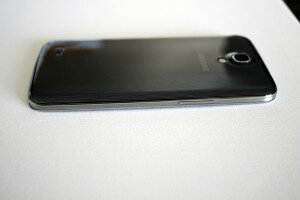
The rear of the device houses the 8.0 Megapixel snapper capable of full 1080p video at thirty frames-per-second, single LED flash and loudspeaker grille at the bottom. The camera and flash arrangement mimics the Galaxy S4, which isn’t a bad thing.side and volume half-way up the left(yes, they’re lower than normal – you can operate the device’s hardware buttons with one-hand), 3.5mm and noise-cancelling mic on top. In addition, you’ll also find an Infrared blaster on the top, allowing you to use the Mega as a giant remote control. This is also a very welcome inclusion.
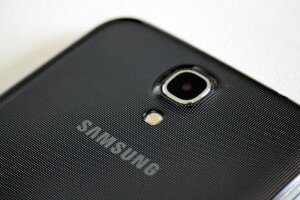
Earpiece quality is excellent (even better on a HD Voice-enabled network) but the loudspeaker is the true audio standout, packing more volume and low-end than any other device I’ve heard. Some of the default high-pitched Samsung ringtones are literally painful to listen to on this thing!
So that’s the nuts and bolts – a blown-up Galaxy S4 body, with a US Galaxy S3 at its heart. What about the software? How is it to actually use?
Software
Delightful. This phone shows that we truly are reaching a point of diminishing returns in mobile hardware, where only marketers are having their dreams fulfilled afterwards. For its seemingly middling specifications, the regular-use performance and fluidity of the Mega is top-notch. No doubt having the very latest Android 4.2.2 helps, but the software and new ‘MegaUX’ user interface have obviously been well-optimised – for the hardware, at least.
Skipping through homescreens is a breeze, unlocking is fluid and scrolling around the slowly-refining TouchWiz is as smooth as any other phone I’ve used. Something that helps with the fluid feeling is the lack of ghosting in any form on the LCD; it just isn’t there. Scrolling the widgets screen is always a good tell-tale of this, and the Mega is superb here. It’s clear (pun intended) a bit of thought went into the panel selection for this model – and rightly so, as it is the drawcard.
The Mega has the very latest TouchWiz, with all the refinements, settings and headaches that entails. Finally the Settings menu is no longer a jumbled mess and has some semblance of tabbed organisation! You can have up to seven homescreens, five of which are set up standard, and chock-a-block full of the usual junky widgets.
There are a few things which puzzle me immensely about this software package, however. Like why, with all this screen real-estate, I can still only have four shortcuts on the launcher. Or why I still only get a 6×4 grid in the app drawer. There is a huge glut of wasted space around the interface, where extra icons or an extra row could easily be included. Why I still can’t resize a damn widget to fit more than two on a homescreen. When they said the MegaUX had been ‘tailored’ to the big screen, I didn’t expect them to add ClearType to the Galaxy S3 software and call it a day. Once again, Samsung’s mammoth device portfolio cripples a perfectly good hardware platform with generic software across the whole range. Even a specialized product line like Mega misses out on a couple of simple software changes that really could’ve brought it into its element. This is beginning to become a repeated point of contention with Samsung – forget releasing a hundred phones a year guys, and work on differentiating your product lines a little.
I will say this though – the Samsung keyboard really comes into its element on this phone. It has been upsized a touch, and fits well. The lack of carrier branding and bloat is also welcome, although the usual Samsung garbage still comes pre-loaded, and still isn’t user-removable without Root. There are also some nifty customizations to allow you to use the device one-handed for text input; both the dialer and the keyboard can be scaled down and ‘pinned’ to whichever side of the screen feels more comfortable. An excellent idea for a device this size.
Camera
Moving on, the camera is every bit as good as the Galaxy S3 and the Note II, even edging them out every-so-slightly in color reproduction. There seems to have been a tweak or two to how chromatic aberration (purple halos around over-exposed areas) is handled, as the phenomenon seems much less prevalent on the Mega in my short time testing this afternoon. Video is adequate, not mind-blowing but certainly above-average for class.
Impression
Now I know this has been a long review, but this is a very niche product and deserves a bit of extra publicity and explanation. Summarizing the Mega is difficult, as it’s bound to be a limited-purchase kind of device and the sheer size will turn the majority of people away. I will say this in closing, though – don’t let the paper dimensions fool you too much. This has been designed as a phone first-and-foremost, and has the right design language for a pocket. Admittedly you’ll need a pretty big one, or perhaps a nice satchel, but if you enjoy a larger device, the Mega is a capable and satisfying fit. There’s little to differentiate it from other Samsung phones apart from its size, but it is a highly-capable all-rounder, and the ideal amalgamation for those who carry a phone and 7-inch tablet. Finally, we have a device which can offer the best of both worlds. This, ladies and gents, is the true ‘phablet’.
Editor’s note: This review was originally published by juzz86 at Cell Trader Online; please feel welcome to head over if you have any comments or questions about this review, and check out their forums and device marketplace while you are there.
About Justin MacQueen
Justin is a Lab Analyst and Mobile Technology Nut from Tasmania, Australia. When he's not trying the latest-and-greatest of the tech world, you'll find him discussing it at the CellTraderOnline forums, rebuilding a PC, or indulging in a quiet beer beside a river somewhere, fishing rod in-hand.
- Web |
- More Posts (2)
